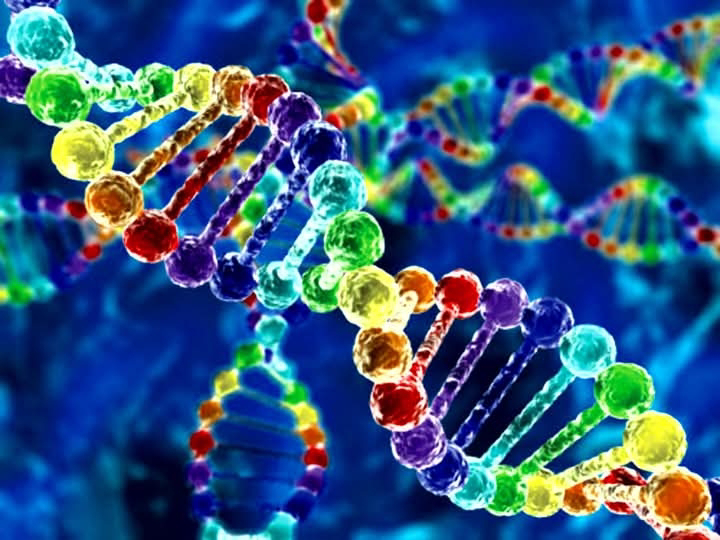Non-Coding DNA: More Than "Junk DNA"
___
Non-coding DNA, often referred to as "junk DNA," constitutes about **98% of the human genome**.
Initially dismissed as non-functional, this vast segment of our genetic material is now recognized for its critical roles in regulating gene expression, maintaining genome stability, and influencing evolutionary processes.
Below is a detailed exploration of non-coding DNA, its functions, implications for health, and future directions in research.
**1. Gene Regulation**
One of the primary roles of non-coding DNA is to regulate **when, where, and how much a gene is expressed**. This regulation is achieved through specific sequences that serve as binding sites for proteins like transcription factors. These proteins control the transcription process, determining whether a gene is turned "on" or "off."
- **Promoters:**
Promoters are regions in non-coding DNA located near the start of a gene. They serve as docking sites for RNA polymerase, the enzyme responsible for transcribing DNA into RNA. Without promoters, genes cannot be properly expressed.
- **Enhancers:**
Enhancers can be located far from the genes they regulate. When bound by specific proteins, they increase the likelihood of transcription, effectively "boosting" gene expression.
- **Silencers:**
Silencers prevent unwanted gene expression by binding repressor proteins. This ensures that genes are only active in appropriate tissues or developmental stages.
These regulatory elements act like switches and dials, fine-tuning gene activity to suit the needs of the cell or organism.
**2. No Protein Production**
Unlike coding DNA (which makes up only about 2% of the genome), non-coding DNA does not provide instructions for building proteins. Instead, its primary role is regulatory or structural.
However, some non-coding regions do produce functional RNA molecules (e.g., tRNA, rRNA, and regulatory RNAs) that play critical roles in cellular processes.
**3. The Misnomer “Junk DNA”**
The term "junk DNA" was coined in the 1970s when scientists believed these regions had no function. However, advances in genomics have shown that non-coding DNA is anything but useless:
- It regulates gene expression.
- It contributes to genome stability.
- It plays a role in evolutionary innovation by serving as a source of genetic variation.
**4. Examples of Non-Coding DNA Functions**
**A. Promoters**
Promoters are essential for initiating transcription. They ensure RNA polymerase binds to the correct location on the genome to begin copying a gene into RNA.
**B. Enhancers**
Enhancers can act over long distances to increase transcription levels. They often work in combination with promoters and other regulatory elements to ensure precise control of gene expression.
**C. Silencers**
Silencers prevent unwanted gene expression by binding repressor proteins. This ensures that genes are only active in appropriate tissues or developmental stages.
**D. Maintaining Chromosome Structure**
Non-coding DNA also plays structural roles:
- It helps organize chromosomes within the nucleus.
- It stabilizes chromosomal ends through sequences called telomeres.
- It contributes to centromeres, which are critical for proper chromosome segregation during cell division.
**5. Other Notable Functions**
**A. Non-Coding RNAs (ncRNAs)**
Some non-coding DNA produces functional RNA molecules instead of proteins:
- **MicroRNAs (miRNAs):** Small RNAs that regulate gene expression by degrading messenger RNAs or blocking their translation.
- **Long Non-Coding RNAs (lncRNAs):** Involved in chromatin remodeling and regulating nearby genes.
- **Small Interfering RNAs (siRNAs):** Involved in RNA interference (RNAi), silencing specific genes by promoting mRNA degradation.
- **Piwi-Interacting RNAs (piRNAs):** Help silence transposons and maintain genome integrity in germ cells.
- **Circular RNAs (circRNAs):** Act as sponges for miRNAs or interact with proteins to influence gene regulation.
**B. Developmental Biology**
Non-coding DNA plays critical roles during development. Enhancers and other regulatory elements control the timing and spatial expression of genes during embryonic development, influencing cell differentiation and organ formation.
**C. Evolutionary Perspectives**
Some non-coding regions are highly conserved across species, indicating their importance in fundamental biological processes.
Changes in non-coding regions can lead to significant phenotypic diversity among species, as regulatory elements evolve more rapidly than coding sequences.
**6. Implications for Health and Disease**
Mutations or changes in non-coding DNA can have profound effects on health:
- Many cancer-associated mutations are found in non-coding regions, affecting regulatory elements that control oncogenes and tumor suppressor genes.
- Non-coding variants have been implicated in complex diseases such as diabetes, heart disease, and autoimmune disorders.
Understanding these implications is crucial for developing targeted therapies and personalized medicine approaches based on individual genomic profiles.
**7. Technological Advances**
Recent technological advancements enhance our understanding of non-coding DNA:
- **Genome-Wide Association Studies (GWAS):** These studies often identify non-coding variants associated with diseases, providing insights into their functional roles.
- **CRISPR/Cas9 Technology:** This gene-editing tool allows researchers to create precise mutations in non-coding regions and observe their effects on gene regulation and cellular function.
**8. Ethical Considerations**
As research on non-coding DNA progresses, ethical considerations regarding genetic privacy, consent for genomic data usage, and potential discrimination based on genetic information become increasingly important.
**9. Future Directions**
Future research directions include:
- Understanding the full range of functions of ncRNAs.
- Exploring how environmental factors influence non-coding DNA activity.
- Investigating potential therapeutic interventions targeting non-coding regions.
**10. Public Engagement and Education**
Engaging the public in discussions about non-coding DNA can help demystify genetics and promote awareness about its role in health and disease.
Non-coding DNA may not code for proteins, but it is indispensable for life. Its roles include:
1. Regulating gene expression through promoters, enhancers, and silencers.
2. Maintaining chromosome structure and stability.
3. Producing functional RNAs like miRNAs and lncRNAs.
4. Influencing evolution by introducing genetic variation.
Far from being "junk," this vast portion of our genome acts like an intricate control system—guiding cellular processes with remarkable precision!
Understanding its complexity not only enriches our knowledge of genetics but also opens new avenues for medical research and therapeutic strategies.



Comments
Post a Comment